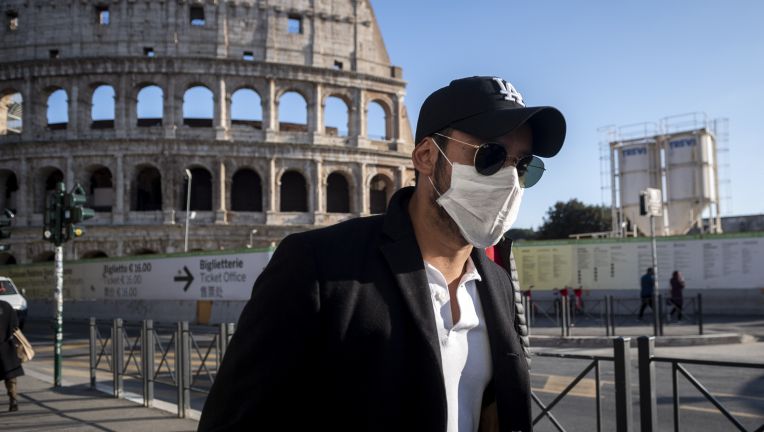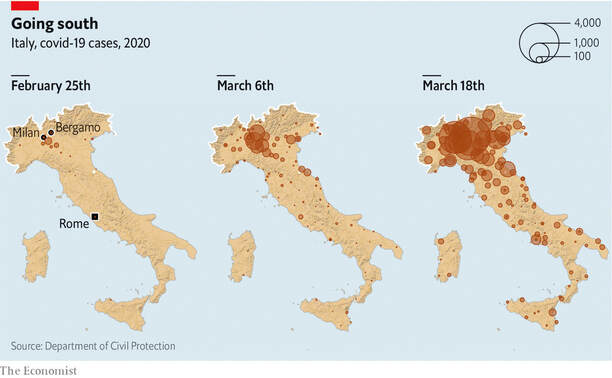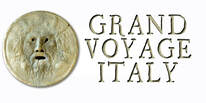|
Why or how did coronavirus travel to Italy? Perhaps there are several reasons... One might argue that being overcrowded as one of the most popular, "must see" destinations in the world is a large factor. What do most tourists do when they get to Italy? They all flock to the few "must see" sights on their lists--Vatican Museum, Trevi Fountain, Leaning Tour of Pisa, a gondola ride in Venice, stumbling around Pompeii wondering what they are looking at, and in Florence to see that big, naked statue of that guy David--all the while crowding, jamming and shoving to see things that most have no intellectual, spiritual or emotional connection with. Sure, they can say they "saw" the Sistine Chapel when they get home and brag, but did they really take it all in within the 10 minute, pack-them-in and roll-them-out method the Vatican Museum affords these hordes? Tourists who choose to go to "off the beaten path" destinations always experience much less crowding, but actually report having a more authentic "Italian lifestyle" experience. As example, on one very crowded day in Florence (literally, shoulder to shoulder crowds) we decided to head up to Fiesole, a chic town in the hills above Florence. No crowds, amazing food, beautiful architecture, a Roman amphitheater, a fantastic Etruscan museum, topped off by a walk along Fiesole's belvedere with panoramic views of Florence. We had a great experience without the crowding! Facts During 2018 alone, 63.2 million tourists visited Italy. That is more than the population of Italy itself! Contrast that in the U.S. where 77 million tourists visit annually... in a country with nearly 330 million people. I can't imagine how impossible things would be in the States if we had to deal with over 330 million tourists crowding our own national treasures, monuments and parks. Add this fact to the equation: China sent 3.5 million tourists and nearly half of them visited Lombardy and the Veneto, the regions of northern Italy hardest hit by the coronavirus. And although this virus should never be named after the hotspot where it originated, we can all agree that China had this virus early on and wasn't truthful about it for over 3 weeks. Northern Italy has been getting enormous amounts of wealthy Chinese tourists as well as many overbooked Chinese tour groups and cruises. Italy is the fifth most visited country in terms of international tourism arrivals. Italy also contains 55 World Heritage Sites--more than any other country in the world. As recent as the 1950s and 1960s, cities like Rome and Florence were deserted by today's standards. I remember seeing a photo from the 1960s once when the Sistine Chapel had no time limit and was so un-crowded that some people actually would lie down on the floor with binoculars to spend their time examining every detail put up there by the Master's hands. There was no rush with most of these tourists having an art background. Look what Rome was like in the 1960s... No endless lines in front of the Vatican? And you can't really call that a crowd at the Trevi Fountain! Wouldn't it be wonderful if tourism went down to reasonable levels again? And you won't believe what Piazza dei Miracola looked like at the Leaning Tower in Pisa... empty! There were actually cars and buses traveling under the arch where nowadays the whole are is pedestrian only... The Growth of Tourism in Italy By the mid 1970s, airfare to Europe was getting cheaper and cheaper. At the time, I remember getting a round trip ticket to Paris (with no ending date for my return) for about under $300--just about one week's salary at the time. Then came the advent of cheap group bus tours of Europe--you know, "See 10 cities in 8 days!" In some cases, tourists would be on the bus for most of the day with only an hour or two to visit the "must see" sights on their tour itinerary. Then, back on the bus and into the next cheap hotel. Early next day, do it all again. By the 1980s, this package tour concept was taking off like crazy. And the man who invented the concept of package tours was "Mr. Italy", Mario Perillo. His very first offers were exclusively aimed at the land of his ancestors--Italy. Italy had a tourist target on its back from that time forward. He oversold tours for amazingly cheap prices. His son Steve still hawks these cheap tours and has only compounded the overcrowding at tourist destinations. Next came the cruise ships getting into the action, offering all-inclusive, everything-you-can-eat packages to to Rome and Naples or Venice and Greece. The food was "international", having little to do with the culture the tourists were visiting. It's still like that today... with people dining on NY Strip Steak, sushi, pizza or hamburgers while at a dock in Venice. Here's a vintage commercial from so-called "Mr. Italy" himself, Mario Perillo ... Then Who is to Blame? Have the Italians themselves contributed to the distribution of this virus? Well, surely they are at fault, generally speaking, if only for their cultural traditions and being an open, gregarious society. Italians love being with other people. They are warm and gracious and greet each other (and often, new acquaintances) with an embrace and kisses on both cheeks. Unlike in other countries, men also kiss cheeks, and even hold other men arm-in-arm while strolling and chatting about business or world events. Pensioners gather on piazza benches like flocks of pigeons. In the evenings, in virtually every Italian city, town and village, people gather in the early evening for a communal stroll--the passeggiata. But seriously, should we blame a population for just being themselves? Their daily habits are instinctive and in-born, based on a few thousand years of cultural customs and socialization. Italians will always be gregarious. They are also a generous society, evident by the thousands of Syrian refugees they took into their country. After this crisis is a distant memory, Italians will still take part in the passeggiata at the end of the day with neighbors, family and strangers. The old nonni will still gather in groups to exchange gossip. Old men will still sit shoulder to shoulder at tables playing scopa, that quick-paced, mysterious card game. And I hope and pray that their embraces and twice-kissed cheeks remain as they greet each other per sempre. So Who is Left to Blame?
Some in Italy might blame one single man, specifically, a 38-year-old man who checked himself into a local hospital in the town of Codogno, Lombardy on February 20th. Testing positive with the virus, he became the first recorded patient with the COVID-19 virus in Italy. But since there wasn't any mass testing for this specific covid-19 disease (there are several coronaviruses besides this one), many health officials believe the virus was already in Italy long before the first case was discovered. “The virus had probably been circulating for quite some time,” Flavia Riccardo, a researcher in the Department of Infectious Diseases at the Italian National Institute of Health said in a TIME interview. “This happened right when we were having our peak of influenza and people were presenting with influenza symptoms.” Perhaps we can blame the Italian government and Italian industry for their decision-making, allowing Italian companies to import Chinese workers instead of giving jobs to Italians, as in the case of Italian fashion houses bringing in Chinese labor to create "Italian" fashions. An estimated 310,000 Chinese people live and work in Italy--8.3% of the country’s non-EU citizens. Chinese are the third largest group of foreign nationals residing in the country. More than half live in the north, with 16% residing in the provinces of Prato near Florence working in the textile industry. Because of the lock-down, and the fact that these Chinese workers don't have contracts, or work part-time, leaving them with no help from the Italian government when they are laid off. Tens of thousands have already left Italy. But once again. The virus doesn't have a nationality. I suggest that no human is to blame. The real culprit is the non-discriminating, un-biased, equitable and even-handed culprit--the coronavirus covid-19 disease pathogen itself. Viruses recognize no laws of Man. Viruses obey no immigration rules. Viruses are color blind to our skin color. Viruses hold no passports. Viruses aren't a part of any single religion. Viruses don't belong to any political party. Viruses ignore national boundaries. Viruses don't ask for proof of age. Viruses attack our homo-sapiens species, of which every race on the planet is part of. There was a beginning of this crisis, we are now in the middle, and we all have to believe there will come an end. Andrà tutto bene... --Jerry Finzi, GVI |
Categories
All
Archives
May 2023
|




 RSS Feed
RSS Feed
